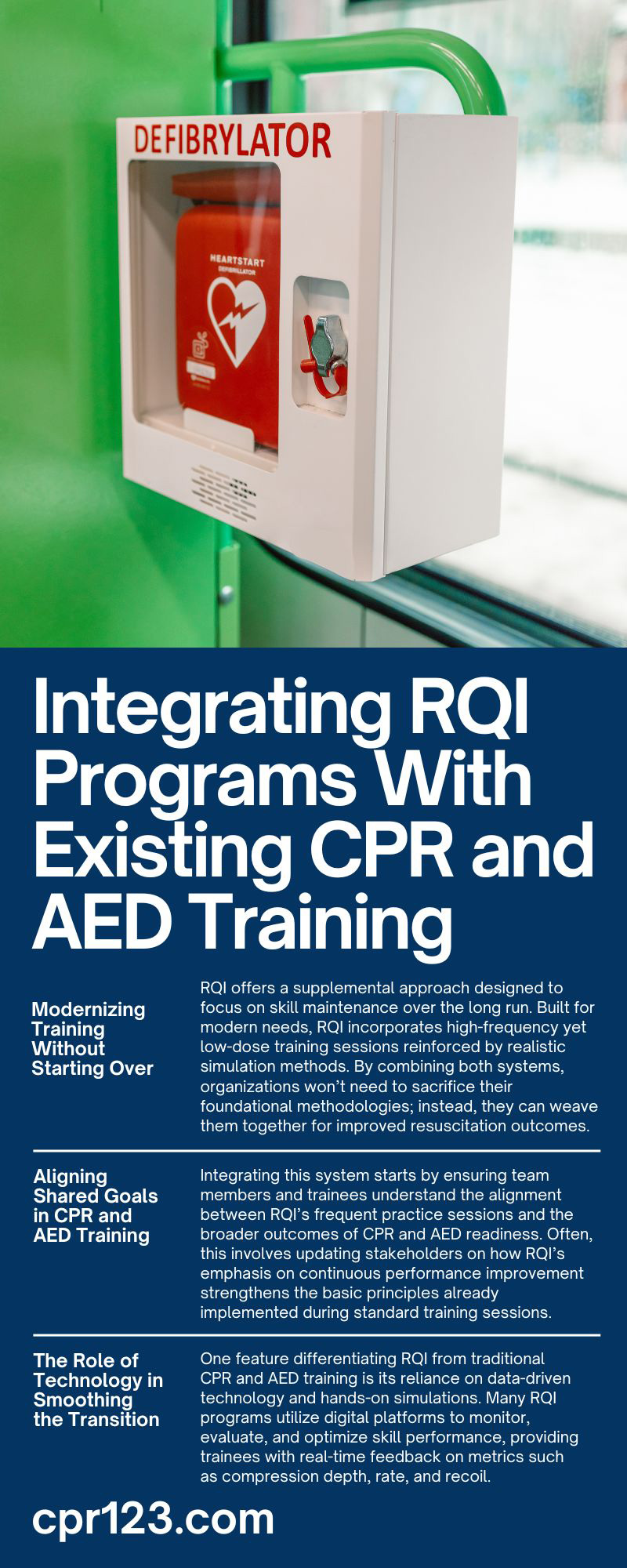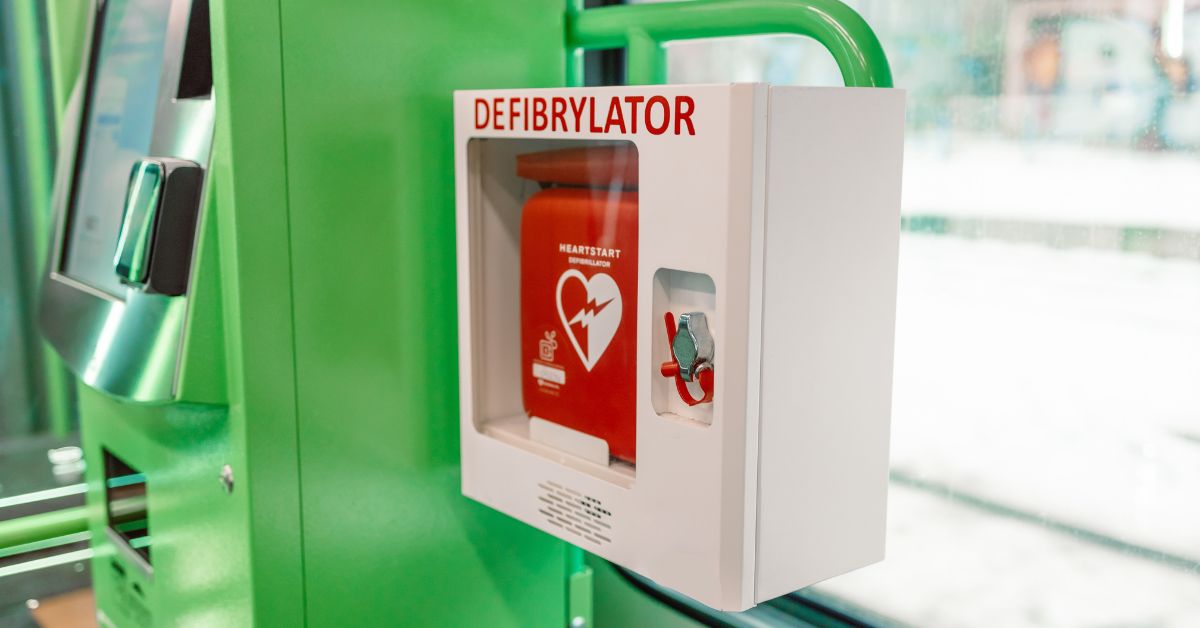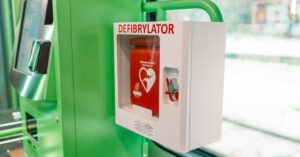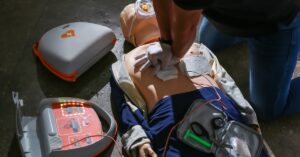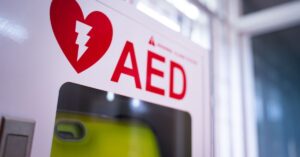The effective implementation of Resuscitation Quality Improvement (RQI) programs alongside existing CPR and AED training can greatly improve the quality and efficiency of providing care during critical health emergencies. By integrating these programs, organizations and healthcare institutions ensure continuous improvement in skills and competencies among healthcare professionals and first responders. Learn why integrating RQI Programs with existing CPR and AED training can benefit healthcare professionals and organizations in improving patient care.
Modernizing Training Without Starting Over
Training in CPR and AED use has been a foundational standard for healthcare providers and workplace providers committed to emergency readiness. However, advancements in technology and nuanced approaches to education have given rise to innovative programs, such as Resuscitation Quality Improvement (RQI). RQI training is about building smarter, more adaptable systems to ensure trainees get the most effective education.
Traditional training models often revolve around periodic classroom sessions. Although these remain equally important, gaps can emerge over time due to infrequent and static sessions. RQI offers a supplemental approach designed to focus on skill maintenance over the long run. Built for modern needs, RQI incorporates high-frequency yet low-dose training sessions reinforced by realistic simulation methods. By combining both systems, organizations won’t need to sacrifice their foundational methodologies; instead, they can weave them together for improved resuscitation outcomes.
Aligning Shared Goals in CPR and AED Training
Before we continue, evaluate the overlapping objectives of these programs. Both CPR and AED training, as well as RQI programs, aim for the same overarching goal: to ensure preparedness in life-threatening situations. CPR focuses on teaching fundamental techniques to perform high-quality chest compressions effectively, while AED training highlights the technical use of automated external defibrillators in cardiac emergencies. Meanwhile, RQI builds upon these skills by emphasizing mastery.
Integrating this system starts by ensuring team members and trainees understand the alignment between RQI’s frequent practice sessions and the broader outcomes of CPR and AED readiness. Often, this involves updating stakeholders on how RQI’s emphasis on continuous performance improvement strengthens the basic principles already implemented during standard training sessions. By establishing collaboration and clarity around objectives, any resistance to blending training approaches tends to diminish.
The Role of Technology in Smoothing the Transition
One feature differentiating RQI from traditional CPR and AED training is its reliance on data-driven technology and hands-on simulations. Many RQI programs utilize digital platforms to monitor, evaluate, and optimize skill performance, providing trainees with real-time feedback on metrics such as compression depth, rate, and recoil.
For organizations transitioning to include RQI, introducing these technological tools can feel intimidating. However, their integration doesn’t disrupt the already existing syllabus. Instead, it replaces guesswork with precision. For instance, introducing RQI kiosks alongside classroom sessions ensures that participants can seamlessly transition from a theoretical understanding to a hands-on application. Live training measures real-time proficiency, enabling users to improve incrementally and ensuring that their CPR and AED skills stay sharp between formal training courses.
RQI’s Continuous Training Philosophy
Another factor that makes integrating RQI programs beneficial is its low-dose, high-frequency training model. Rather than participants waiting months or even years to refresh their CPR skills through extensive seminars, brief refreshers every 90 days or so maintain skills retention longer.
However, it doesn’t mean you have to dismantle existing schedules. A thoughtful solution is identifying natural touchpoints in an organization’s calendar where RQI activities can supplement the existing curriculum. For instance, a quarterly RQI practice module could complement a live semiannual CPR and AED retraining workshop. Pairing these strategies ensures that larger, structured sessions continue to provide deeper knowledge while periodic modules improve skill retention.
Additionally, this methodology addresses one of the most challenging realities in emergency response training: that people may only engage their lifesaving skills under rare and high-stress scenarios. Minimizing these time gaps through RQI provides a clear path toward consistently high performance in critical moments, working in harmony with the previously established education systems.
Engaging Leadership
Leadership buy-in is crucial in determining how effectively organizations and healthcare institutions can implement RQI methods alongside traditional CPR and AED models. For this process to work at its best, managers and training leads must clearly establish the decision to merge these approaches on account of better skill retention rates and practical performance feedback. It’s helpful to present integration as not merely adding workload but clarifying that the investment translates into lifesaving education systems.
Engage stakeholders by presenting clear case studies or pilot results from similar organizations that have effectively incorporated RQI programs. Demonstrating measurable data, such as improved survival rates or reduced response errors during cardiac arrest scenarios among RQI users, provides the justification necessary for leadership to not only support but champion the initiative.
Once leadership is on board, top-down enthusiasm encourages widespread adoption across all levels of the organization.
Benefits of Integrating RQI
When organizations combine traditional CPR and AED education systems with RQI methods, they achieve visible improvements that resonate at both the organizational and individual levels. Once blended, the dual training approach consistently produces more confident responders who feel better equipped for stressful and chaotic environments.
Furthermore, it lowers the stakes surrounding errors in group settings by creating accessible solo practice modules. The balance created between long-form instruction and the fallback provided by RQI’s individualized tools creates a hybrid middle ground where professionals, mid-level responders, and volunteers alike benefit equally.
Lastly, long-term evidence repeatedly shows that the efficiency of CPR and defibrillation improves when high-frequency touchpoints blend naturally into team schedules. Time invested in planning how integrating RQI programs with existing CPR and AED training fits schedules ultimately pays in being prepared for lifesaving situations their teams encounter in daily life.
CPR123 offers engaging and comprehensive AHA certification training designed to equip you with the skills and confidence necessary to respond effectively in emergencies. Whether you’re a healthcare professional or simply want to be prepared, CPR123 is your trusted partner for high-quality medical training.
Adopting RQI for Future Readiness
Looking ahead, organizations not only benefit but future-proof readiness strategies by gradually adding the RQI system to CPR and AED training sessions. Rather than relying solely on certifications, the combined solution enhances preparedness efforts. At its core, this pairing boils down to delivering confidence combined with mastery in crucial seconds when responding to patient situations, where it becomes a matter of life or death.
The importance of integrating RQI programs with existing CPR and AED training lies in leveraging the strengths of both systems to enhance overall effectiveness. For organizations that recognize CPR is more important than a simple checkbox, adding RQI ensures that healthcare providers are ready for the moment when skill matters most.
